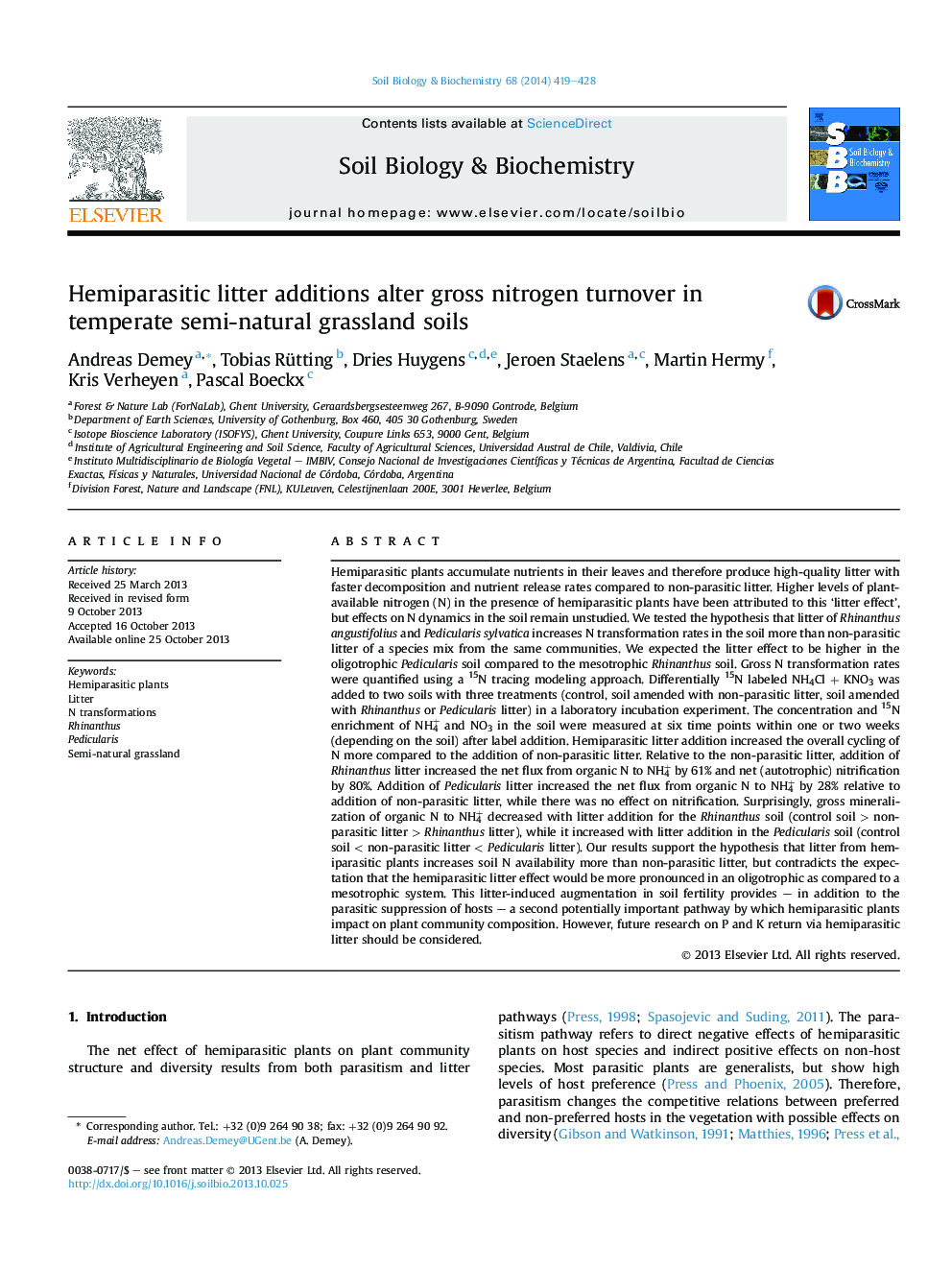| Article ID | Journal | Published Year | Pages | File Type |
|---|---|---|---|---|
| 8365182 | Soil Biology and Biochemistry | 2014 | 10 Pages |
Abstract
Hemiparasitic plants accumulate nutrients in their leaves and therefore produce high-quality litter with faster decomposition and nutrient release rates compared to non-parasitic litter. Higher levels of plant-available nitrogen (N) in the presence of hemiparasitic plants have been attributed to this 'litter effect', but effects on N dynamics in the soil remain unstudied. We tested the hypothesis that litter of Rhinanthus angustifolius and Pedicularis sylvatica increases N transformation rates in the soil more than non-parasitic litter of a species mix from the same communities. We expected the litter effect to be higher in the oligotrophic Pedicularis soil compared to the mesotrophic Rhinanthus soil. Gross N transformation rates were quantified using a 15N tracing modeling approach. Differentially 15N labeled NH4Cl + KNO3 was added to two soils with three treatments (control, soil amended with non-parasitic litter, soil amended with Rhinanthus or Pedicularis litter) in a laboratory incubation experiment. The concentration and 15N enrichment of NH4+ and NO3 in the soil were measured at six time points within one or two weeks (depending on the soil) after label addition. Hemiparasitic litter addition increased the overall cycling of N more compared to the addition of non-parasitic litter. Relative to the non-parasitic litter, addition of Rhinanthus litter increased the net flux from organic N to NH4+ by 61% and net (autotrophic) nitrification by 80%. Addition of Pedicularis litter increased the net flux from organic N to NH4+ by 28% relative to addition of non-parasitic litter, while there was no effect on nitrification. Surprisingly, gross mineralization of organic N to NH4+ decreased with litter addition for the Rhinanthus soil (control soil > non-parasitic litter > Rhinanthus litter), while it increased with litter addition in the Pedicularis soil (control soil < non-parasitic litter < Pedicularis litter). Our results support the hypothesis that litter from hemiparasitic plants increases soil N availability more than non-parasitic litter, but contradicts the expectation that the hemiparasitic litter effect would be more pronounced in an oligotrophic as compared to a mesotrophic system. This litter-induced augmentation in soil fertility provides - in addition to the parasitic suppression of hosts - a second potentially important pathway by which hemiparasitic plants impact on plant community composition. However, future research on P and K return via hemiparasitic litter should be considered.
Related Topics
Life Sciences
Agricultural and Biological Sciences
Soil Science
Authors
Andreas Demey, Tobias Rütting, Dries Huygens, Jeroen Staelens, Martin Hermy, Kris Verheyen, Pascal Boeckx,
